| |
 Posted Feb 7, 2013, 11:44 PM
Posted Feb 7, 2013, 11:44 PM
|
 |
Khurram Parvaz
|
|
Join Date: May 2009
Location: NEW YORK
Posts: 2,424
|
|
 NEW YORK | St. Patrick's Cathedral | 339 FT | ≈ FLOORS | 1879
NEW YORK | St. Patrick's Cathedral | 339 FT | ≈ FLOORS | 1879
NY Times
St. Patrick’s to Undergo a Three-Year, $177 Million Renovation
Quote:
Take one good, long last look at St. Patrick’s Cathedral, a defining landmark of New York City. It is about to disappear for two or three years under a cocoon of scaffolding, inside and out, that will permit a $177 million rehabilitation project to unfold, the most extensive work at the cathedral in generations.
Building Blocks
How the city looks and feels — and why it got that way.
DESCRIPTIONDavid W. Dunlap/The New York Times St. Patrick’s Cathedral.
Come to think of it, don’t take too good a look. You may see the growing cracks in the marble facade and the patchwork of repairs up and down the buttresses, the dimness of the stained-glass windows and smoke-darkened walls, the zebra striping caused by lathing behind the plaster ceiling vaults, jerry-built vents poking out of the triforium arches along the nave, the jury-rigged cooling plant sitting in a giant plywood shed on 51st Street and the climbing-ivy accumulation of wiring and conduits around the column bases. You may even spot a chunk of stone on the cathedral grounds that has fallen from a wall above.
These and many other problems are to be addressed in the project, which is to be formally announced on Saturday by Cardinal Timothy M. Dolan as part of the celebration of St. Patrick’s Day.
“I’m talking about survival,” the cardinal said in an interview last week. “If we don’t do something substantive for St. Patrick’s Cathedral, in four or five years we’re going to have to close it, because it will be dangerous.”
That may be a bit of fund-raising hyperbole. But the physical condition of St. Patrick’s, which was designed by James Renwick Jr. and opened in 1879, has been a source of concern since Cardinal Edward M. Egan was archbishop and initiated the renovation project more than five years ago.
DESCRIPTIONDavid W. Dunlap/The New York Times All of the pipes will be removed from the west side of the organ to protect them from dust.
“There is actually an exponential degradation of the building,” said Jeffrey Murphy, a partner in Murphy Burnham & Buttrick Architects, which is responsible for the renovation. “A little crack that would cost $300 to fix initially has the potential to turn into a several thousand dollar stone replacement if left unchecked. It’s not hyperbole to say that doing nothing will cause the archdiocese to spend a lot more money down the line.”
Cardinal Dolan and Mr. Murphy said the last renovation of equivalent scope occurred in the 1940s. Lesser rehabilitation was done in the 1970s.
While the cathedral will not close during the renovation, it will not look anything like itself. In the first of three phases, beginning next month, exterior scaffolding will be erected around the entire Fifth Avenue facade, all the way to the top of the spires, 330 feet above the sidewalk. It will run along the nave on both sides and then wrap around the north and south transepts — the arms in the cathedral’s cruciform plan.
DESCRIPTIONDavid W. Dunlap/The New York Times Unobstructed views will be — temporarily — a thing of the past.
Interior scaffolding will rise at the west end of the nave; that is, the bays closest to the Fifth Avenue entrance. This will obscure the organ loft and the great rose window. The organ pipes in this area of the cathedral will be removed during the renovation to protect them from dust.
Cardinal Dolan said financing was in hand to cover the first phase, which will cost about $45 million. Half of the money is coming from the Roman Catholic Archdiocese of New York, he said, and the rest from the trustees of the cathedral and from private donors.
For the second phase to begin in November and to take advantage of the scaffolding already on site, another $50 million must be raised soon. Success depends on the answers to several questions:
DESCRIPTIONDavid W. Dunlap/The New York Times The marble of the exterior, after cleaning, and before.
Will New Yorkers who disagree with the cardinal’s conservative stance on social issues be able — or willing — to distinguish St. Patrick’s as a civic landmark that stands apart from church teaching and archdiocesan politicking? How interested will anyone be in giving money to a landmark restoration project at a time when many basic human needs are going unmet in the city? And how much philanthropic money is out there in any case, given the state of the economy?
Cardinal Dolan allowed that some prospective donors had raised the issue of whether bricks and mortar ought to be tended to while the poor go hungry. Indeed, he said, one non-Catholic prospect said he would not contribute to the cathedral renovation, though he would give a like amount to Catholic Charities.
But the cardinal said that he hoped to persuade such donors that improving the cathedral would be a boon to the city’s economy — “Please God, hiring a lot of workers is going to help people without jobs” — and that the cathedral’s inspirational role would be strengthened, turning those who attend services into “apostles to the poor.”
“When you have a renewed, revived, restored, repaired St Patrick’s,” Cardinal Dolan said, “we’re going to be more effectively able to preach that message of service to the poor; ergo, we’re going to be able to help the poor.”
He said he had been told by more than one of the 50 or 60 potential donors whom he has personally courted that they cringed at some of the church’s positions but still loved St. Patrick’s enough to contribute.
DESCRIPTIONDavid W. Dunlap/The New York Times A stained-glass window has been reinstalled to provide space for ventilation, to protect against the buildup of heat and humidity.
The most obvious improvement visitors can expect to see, probably by early 2014, is a much brighter facade. The marble will be cleaned with a process known as Rotec vortex, using a low-pressure stream of swirling air, water and microabrasive powder. It is so gentle that one could hold a hand in front of it, said Raymond M. Pepi, the president and founder of Building Conservation Associates, consultants on the project. “And all you’d get is a clean hand.”
Inside the cathedral — surprisingly — marble reaches only about 30 feet above the floor. In a 19th-century economy move, the builders of the interior switched from marble to a material called Beton Coignet, also known as artificial stone. Above the concrete walls are ceiling vaults of plaster. The concrete and plaster surfaces must be cleaned and repainted. An area around the ambulatory chapel of St. Andrew has been set aside for testing paint samples.
DESCRIPTIONDavid W. Dunlap/The New York Times Jeffrey Murphy, lead architect of the renovation, left, and Raymond M. Pepi, a restoration consultant.
There are more than 1,300 stained-glass panels in the cathedral. About 8 percent will be removed for repair, Mr. Murphy said. The rest will be cleaned and repaired in place. A big problem is posed by protective glazing installed decades ago over the stained glass, which traps moisture and heat. One solution for the most vulnerable stained-glass panels is to set them in special frames, just far enough out of the window surrounds that they are naturally ventilated on all sides.
It is a measure of the times that the restoration team includes a security consultant, Ducibella Venter & Santore, which has handled threat assessments and protective measures for the new World Trade Center, among other potential high-profile terrorist targets. Mr. Murphy would say nothing about the security firm’s recommendations for the cathedral. But the cathedral’s design, set back from the street and well above the sidewalk in most places, does offer an inherent defensive advantage against vehicle-borne bombs.
Among the fund-raising leaders is Rob Speyer, the president and a co-chief executive of Tishman Speyer, whose holdings include a substantial interest in Rockefeller Center, across Fifth Avenue. Mr. Speyer has suggested the possibility, however conceptual, of tapping into Rockefeller Center’s power plant, running utility lines under the street and providing heating and cooling to the cathedral.
“Rockefeller Center has surely benefited over the years from its link to St. Patrick’s Cathedral,” he said. “I’m Jewish. We are neighbors. This is not about church politics. This is about restoring one of the city’s most important landmarks. It’s a responsibility we all share.”
|
Without question the best Cathedral in the city, and replaced the old St. Patrick's in Lower Manhattan which many don't know about. Deservedly deserves this major facelift, being the largest Gothic cathedral in the United States.
Quote:
|
The Cathedral of St. Patrick (commonly called St. Patrick's Cathedral) is a decorated Neo-Gothic-style Roman Catholic cathedral church in the United States. It is the seat of the archbishop of the Roman Catholic Archdiocese of New York, and a parish church, located on the east side of Fifth Avenue between 50th and 51st Streets in midtown Manhattan, New York City, New York, directly across the street from Rockefeller Center and specifically facing the Atlas statue.
|
Quote:
Although the cornerstone was first laid in 1858, construction work was disrupted during the American Civil War.
The magnificent rose window is to the designs of Charles Connick.
The cathedral has 3 organs.
New York's archbishops are buried under the high altar in a crypt.
The Cathedral was named a National Historic Landmark on December 8, 1976.
The Cathedral serves as the seat of the archbishop for the Roman Catholic Archdicocese of New York.
The cathedral's windows were built by artisans from Birmingham (England), Boston, MA and Chartres in France.
St. Patrick's is the largest decorated Gothic catholic cathedral in the US.
|
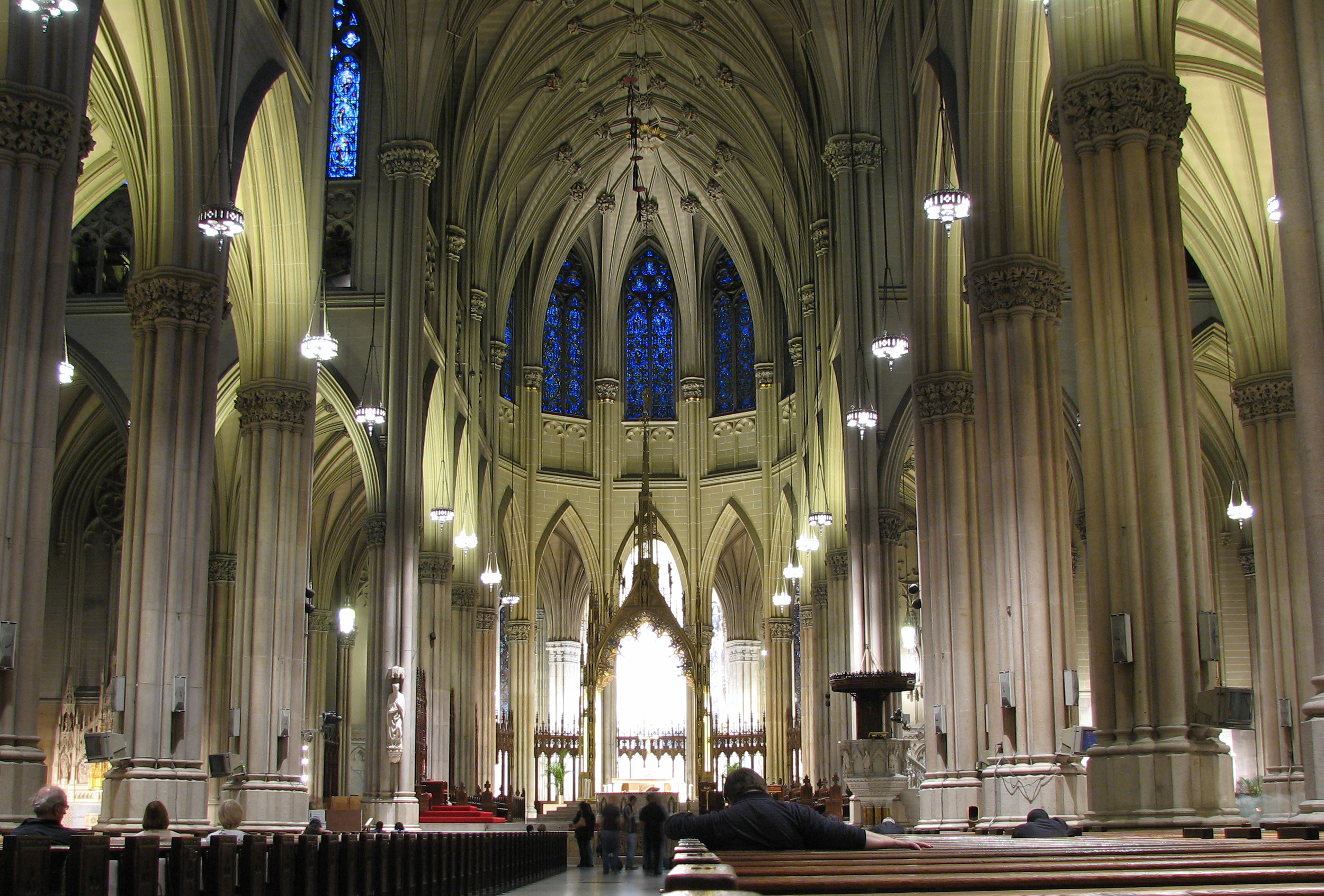
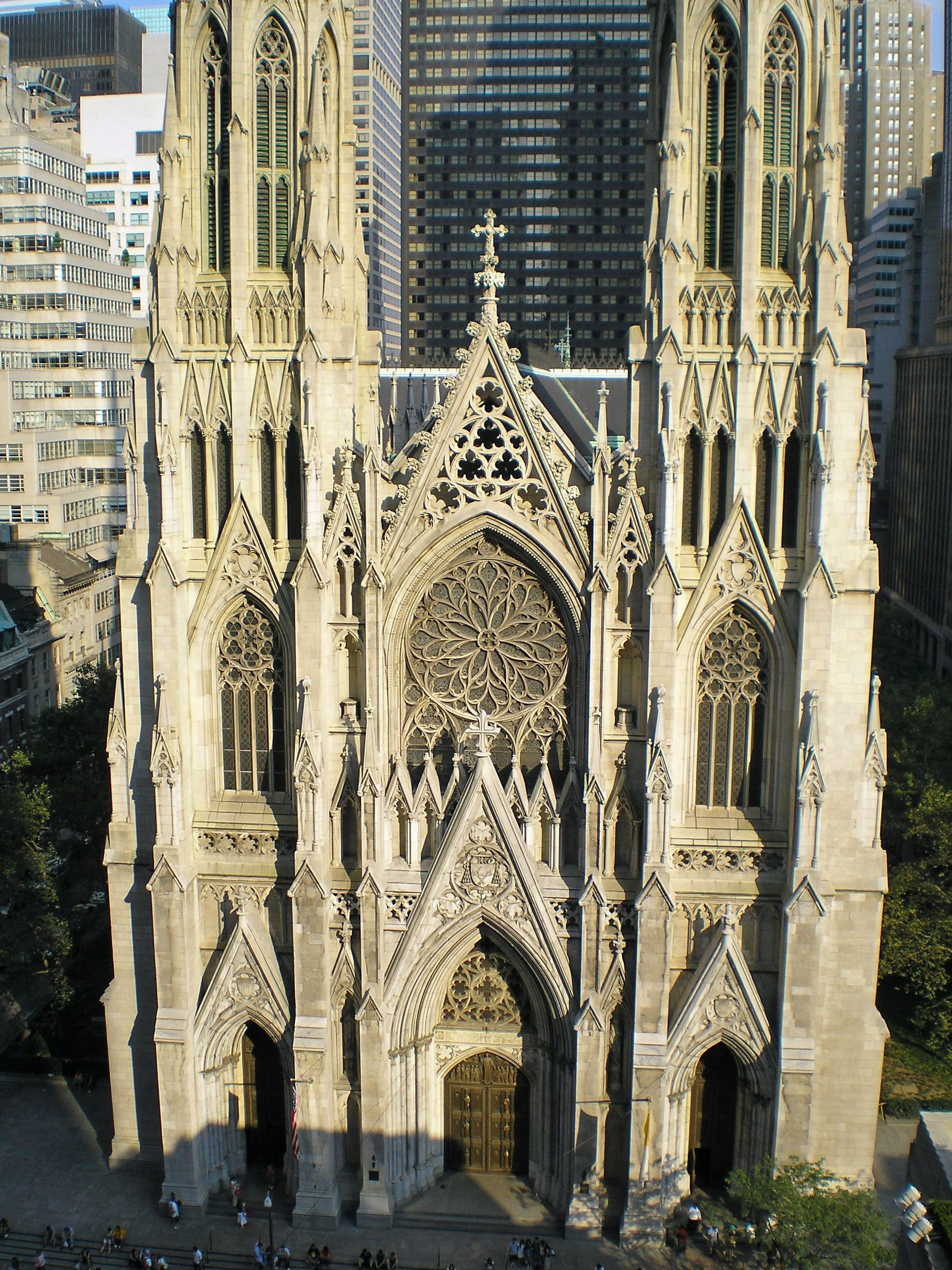
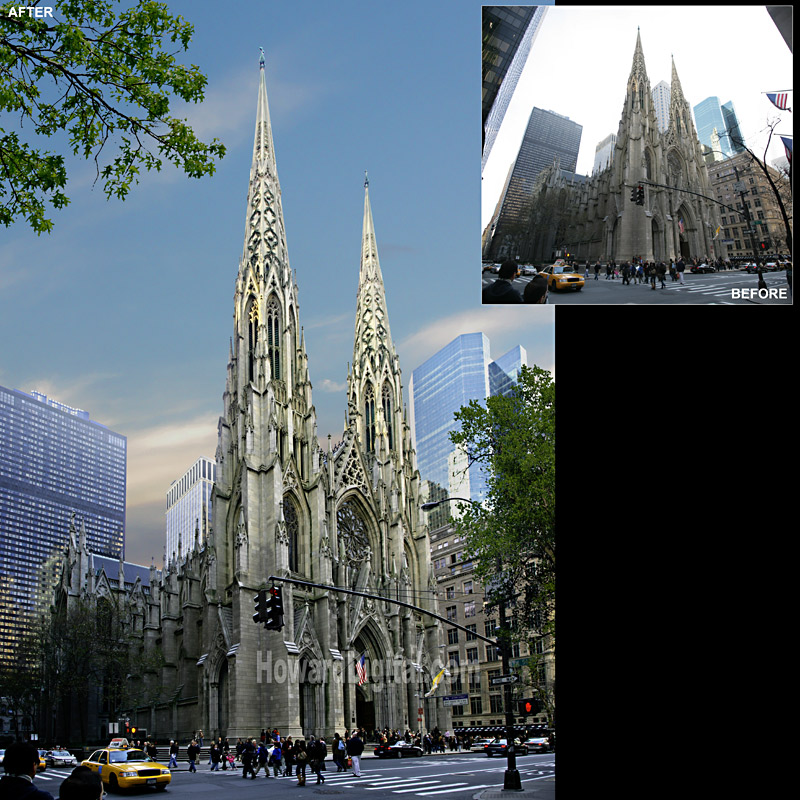
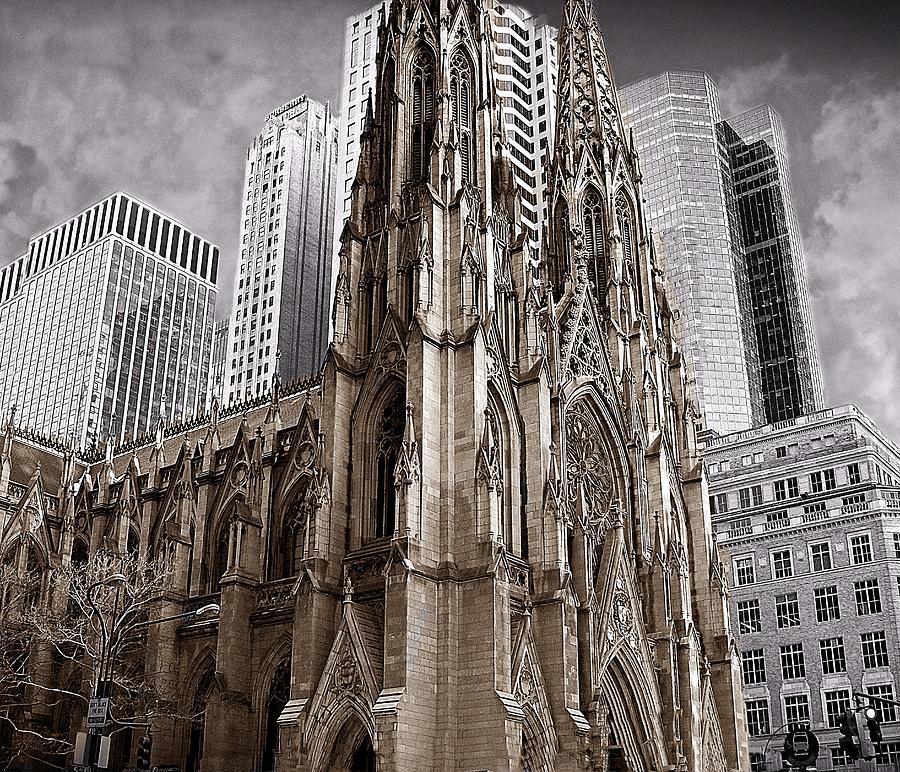

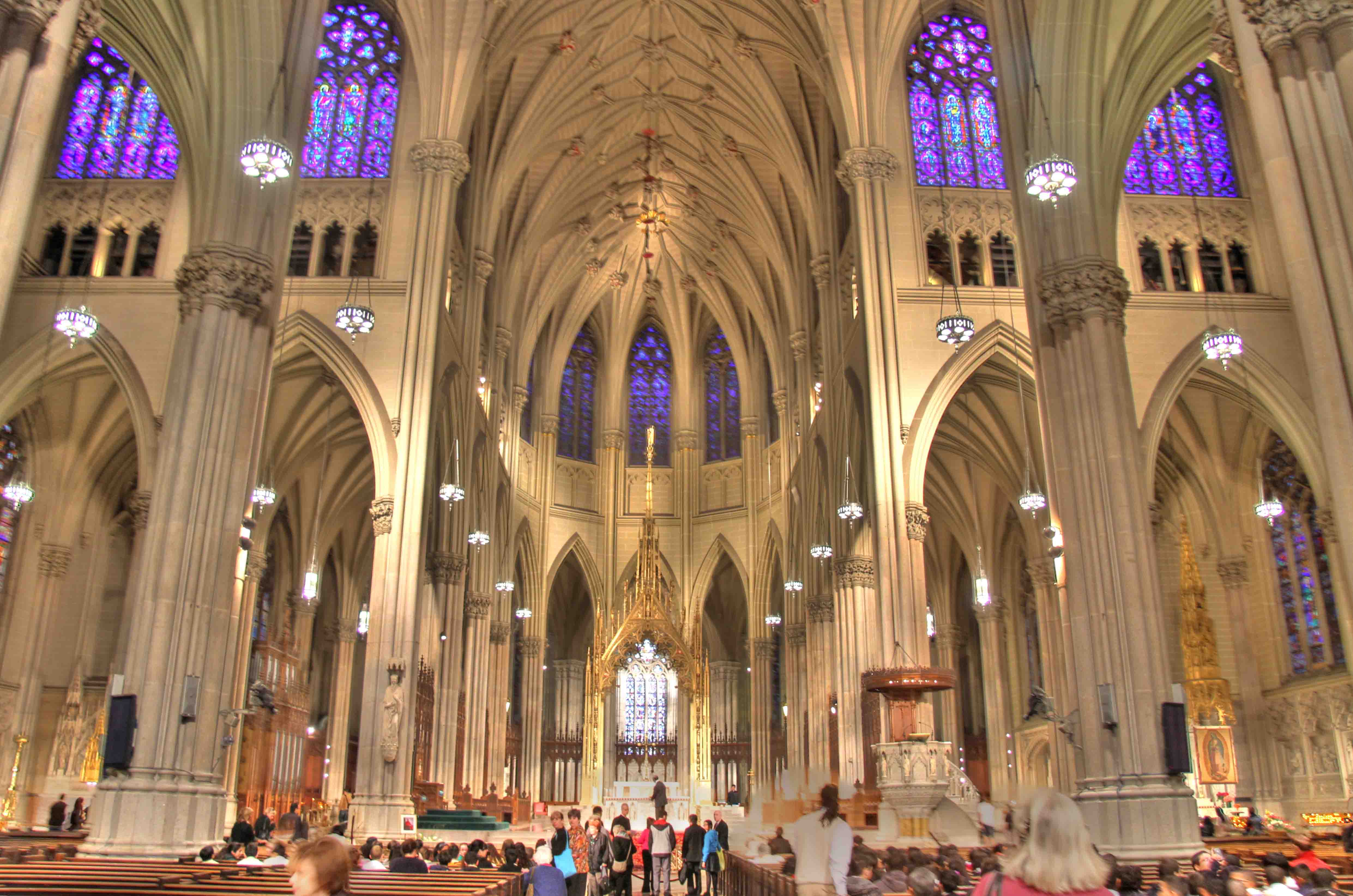

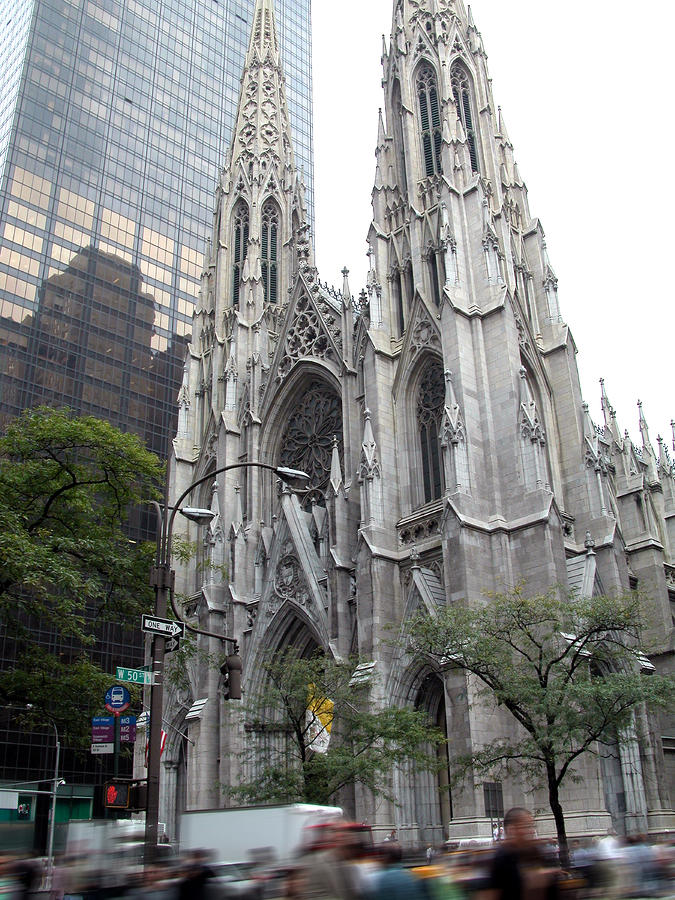

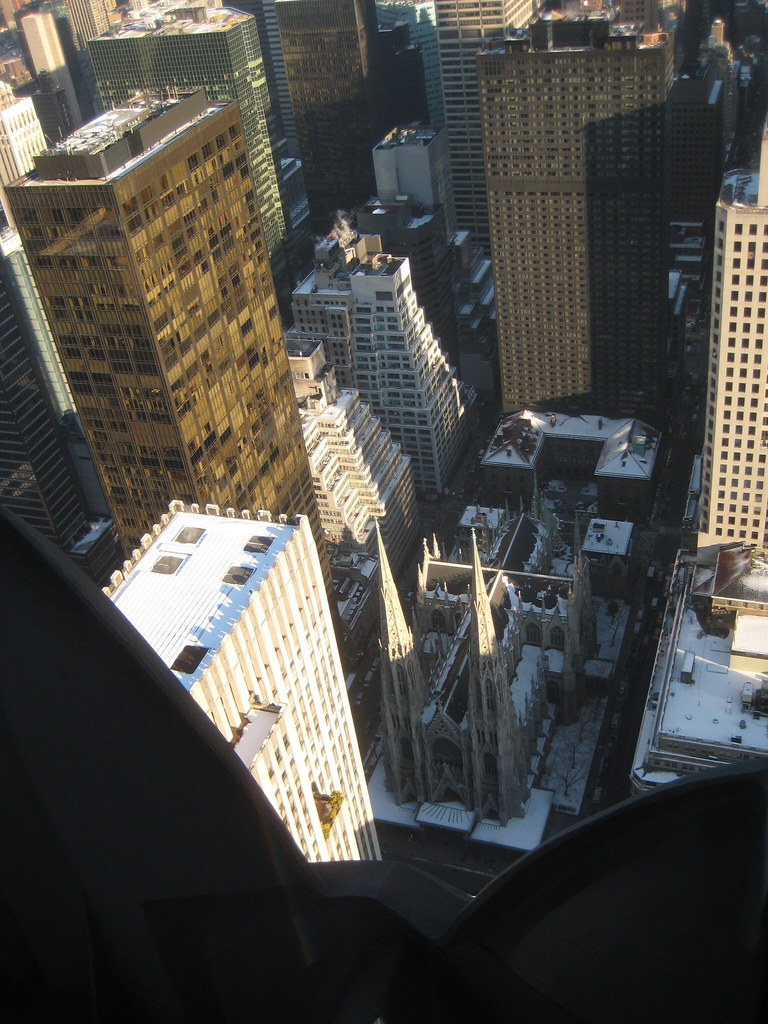

|
|
|



